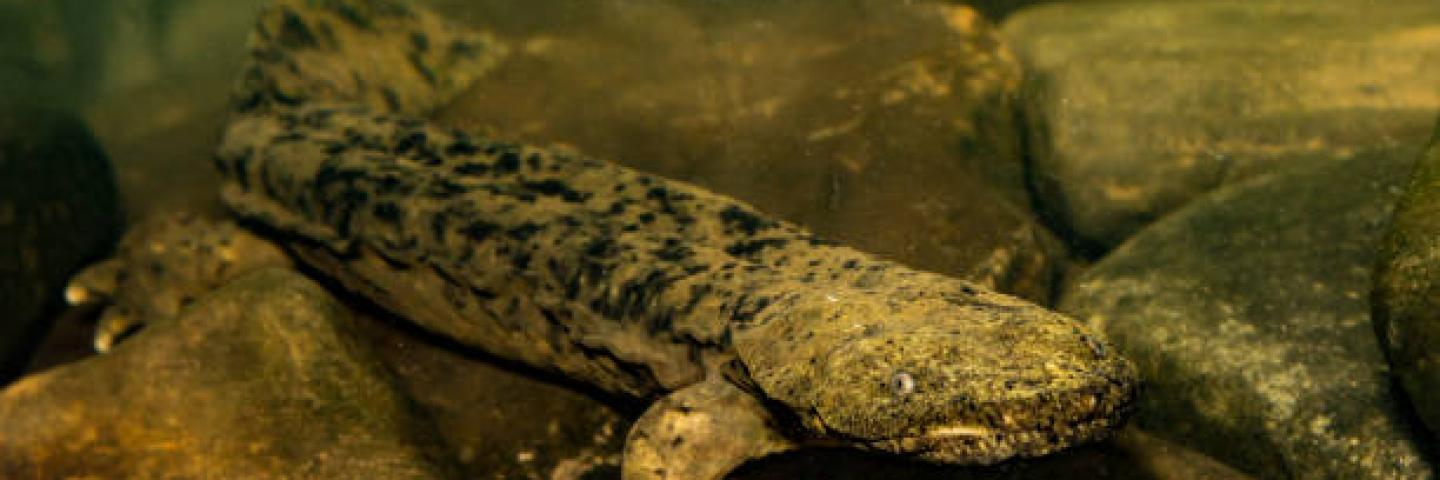Defenders of the Hellbender

In 2018, Defenders of Wildlife, along with USDA’s Natural Resources Conservation Service (NRCS) in North Carolina, Tennessee, and Virginia established a partnership with local partners and landowners. Their goal was to implement conservation practices to help the habitats of the Eastern Hell bender.
Founded in 1947, Defenders of Wildlife is a U.S.-based national conservation organization dedicated to the protection and restoration of imperiled species and their habitats in North America. In 2018, Defenders of Wildlife, along with USDA’s Natural Resources Conservation Service (NRCS) in North Carolina, Tennessee, and Virginia established a partnership with local partners and landowners. Their goal was to implement conservation practices to help restore and maintain the habitats of the Eastern Hellbender which is generally considered to be the largest North American salamander and the third largest salamander in the world.
The hellbender salamander can live to be over 30 years old under the right water conditions and a healthy population of hellbenders is a good indicator of clean water. Hellbenders can grow up to 29 inches in length and can vary in color ranging from grayish to reddish brown with occasional spotting along its back. The home range for the salamander in North Carolina occurs in fast-moving, clean mountain streams in the Tennessee and New River drainage areas. The salamander is mostly active at night and relies on its senses of touch and smell to gather food. It “breathes” by absorbing dissolved oxygen through its skin in the fast-moving waters that it lives in. The hellbender has also earned some colorful names, such as water dog, mud puppy, devil dog, snot otter, or Allegheny alligator. Aside from being ecologically vulnerable, there is a common misconception that the salamanders are poisonous or venomous, which has led to some negative human interactions. There is also a belief that the hellbender has been harmful to trout and other fish populations. In fact, hellbenders are completely harmless, and larger fish have been known to use their eggs as a food source! Aside from the occasional scavenging, the hellbender mostly feeds on crayfish.
Unfortunately, once common throughout the mid-eastern United States, this giant salamander has disappeared from most streams due to an increase in sediment and other pollutants that degrade water quality. Much of the hellbender’s historic range occurs on what are now privately owned agricultural land, which means agricultural producers are also key to the recovery of this vulnerable species. Recognizing this, Defenders of Wildlife took a “shot-in-the-dark” and reached out to NRCS leaders to propose a collaboration. With support from NRCS in Virginia, Tennessee and North Carolina, the organization developed a proposal to include hellbenders in the Working Lands for Wildlife (WLFW) 2.0 program in 2017. Through partnerships with private landowners, Defenders of Wildlife, NRCS and other conservation partners set out to create a “win-win” scenario for the agricultural producers and the vulnerable hellbender salamander.
In 2019 the first Environmental Quality Initiatives Program (EQIP) applications were submitted for funding. The Environmental Quality Incentives Program (EQIP) is a voluntary conservation program that helps agricultural producers in a manner that promotes agricultural production and environmental quality as compatible goals. Through EQIP, agricultural producers receive financial and technical assistance to implement structural and management conservation practices that optimize environmental benefits on working agricultural land. In 2020 the first official hellbender WLFW projects were funded, for a total of over $700,000 over 11 applications in North Carolina alone. This resulted in 387 ft exclusion fence (+ water), 120.4 acres of cover crop, 1 acre of riparian buffer, and 2.3 acres of stream habitat improvement and management. The projects continued into the following fiscal year, resulting in 4.8 acres of riparian buffer, 1 improved stream crossing, 320 ft streambank and shoreline protection. With more work to be done, in fiscal year 2022 the partnership has submitted 10 projects worth $1.3 million with pending preapproval set for April 20, 2022.
One of the biggest achievements of these projects is keeping sediment and other pollutants out of the streams. The win for the salamander is a hospitable environment in which they can grow and stabilize their declining populations. They are incredibly sensitive to water quality, and it is vital that the water they live in remains free of pollutants. Riparian buffers zones, for example, help filter out nutrients, pesticides, and animal waste from agricultural land runoff. The buffer keeps the water quality intact for the hellbender. The win for the producer is the on-farm benefit provided by the installed conservation practices. Cover crops, for example, slow the velocity of runoff from rainfall and snowmelt, reducing soil loss. Over time, a cover crop regimen will increase soil organic matter, leading to improvements in soil structure, stability, and increased moisture and nutrient holding capacity for plant growth. This healthy soil can result in a higher crop yield, increasing a producer’s bottom line.
The dollars invested demonstrate NRCS’ commitment to supporting recovery of this rare aquatic species, but the real measure of success can be seen on the farm with improved soil health and stability and in the water habitats and quality.
#
USDA is an equal opportunity provider, employer and lender.

